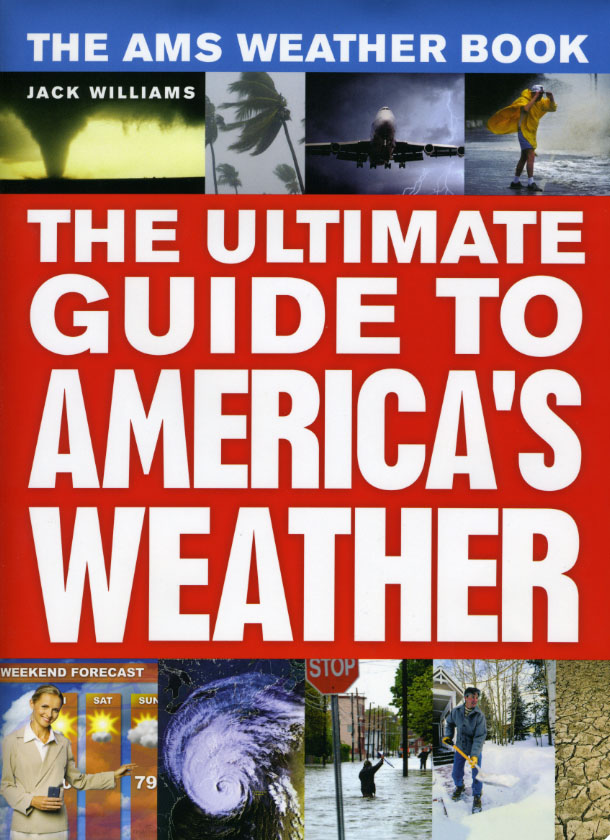Lightning strikes and airplanes
 This morning, news of the missing Air France plane en route to Paris from Rio de Janeiro, which disappeared from radar following an electrical systems breakdown as it flew through heavy turbulence Sunday night, has led some to speculate that the jet was brought down by a lightning strike. Our weather and aviation expert Jack Williams weighs in:
This morning, news of the missing Air France plane en route to Paris from Rio de Janeiro, which disappeared from radar following an electrical systems breakdown as it flew through heavy turbulence Sunday night, has led some to speculate that the jet was brought down by a lightning strike. Our weather and aviation expert Jack Williams weighs in:
Today’s disappearance of an Air France Airbus 330 over the Atlantic Ocean has led to speculation that it was hit by lightning. While it’s possible that lightning could have been involved in the crash, reporters and commentators shouldn’t jump to this conclusion.
When lightning hits an airplane in the air the electrical current flows through the metal skin and back into the air, almost always doing little more than leaving burn marks on the skin.
The last lightning-caused crash of an airliner in the United States was on December 8, 1962 when lightning hit a Pan American Boeing 707 flying in a holding pattern over Elkton, Maryland. It caused a spark that ignited fuel vapor in a tank. The resulting explosion brought the airplane down, killing all 81 aboard.
The Pan Am crash and others somewhat like it elsewhere in the world led the U.S. Federal Aviation Administration and similar agencies in other nations to require that airplanes be built to prevent such explosions and other serious damage.
Requirements put into effect in the 1960s aimed to ensure that lightning’s electrical currents won’t cause sparks in aircraft fuel systems, including the tanks and lines. As aircraft became more complex, governments have upgraded certification requirements to require shielding and other protective measures to guard electronics systems from lightning.
When an electrical current, including one created by lightning, travels through any electrical conductor such as an airplane’s skin, it creates a magnetic field. When such a magnetic field expands and collapses across an electrical conductor, such as a wire inside the airplane, it induces an unwanted electrical current in the conductor.
Currents induced by lightning that knock out an airplane’s navigation and communication radios would be bad enough. Induced currents that caused an airplane’s “fly-by-wire” computers, such as those on the Airbus 330, to give an unwanted control command could be catastrophic.
But government agencies and other researchers have put great effort into projects designed to find ways to prevent such catastrophes.
For instance, from 1979 into 1986, NASA flew an F-106B packed with instruments to measure the results of lightning strikes. This fighter jet, based at NASA’s Langley Research Center in Hampton, Virginia, flew into thunderstorms 1,496 times and was hit by lighting 714 times.
In December 2007 Elizabeth Vargas of ABC’s 20/20 interviewed Bruce Fisher, lead researcher for the Storms Hazards Program, for a program on travel myths. She questioned him about whether lightning could cause an airliner to crash. Fisher flew in the back seat of the F-106 monitoring the instruments as lightning hit the jet. He estimated that he was in the airplane for more than 200 lightning strikes. The flights and the data gathered were “better than sitting at a desk and doing computations,” Fisher said. “The lightning was the fun part of the mission… You know, we would go up and go down, plus or minus 3,000 or 4,000 feet with the updrafts and the downdrafts and allow the aircraft to do that.”
He assured viewers that when lightning hits an airliner “you’re not going to run into a risk at all. The lightning current does not get inside to the individuals or the equipment inside. The aircraft are designed to keep the lightning on the outside of the plane.”
The biggest lightning threat to aircraft is on the ground. Lightning near an airport causes officials to suspend ground services such as refueling and loading luggage, which can be a major cause of airline delays, especially in Florida and other areas where lightning is common during warm weather.
(This report is based on Williams’s “The Weather Never Sleeps” column in the March 2008 issue of Flight Training magazine published by the Aircraft Owners and Pilots Association.)
For more information, Jack suggests the following links:
Scientific American: What happens when lightning strikes an airplane?
USATODAY.com Answers: Does lightning hit airplanes?
And, of course, be sure to check out Chapter 8 of The AMS Weather Book for an extensive discussion of the science of lightning, the history of lightning research, and the dangers of lightning.